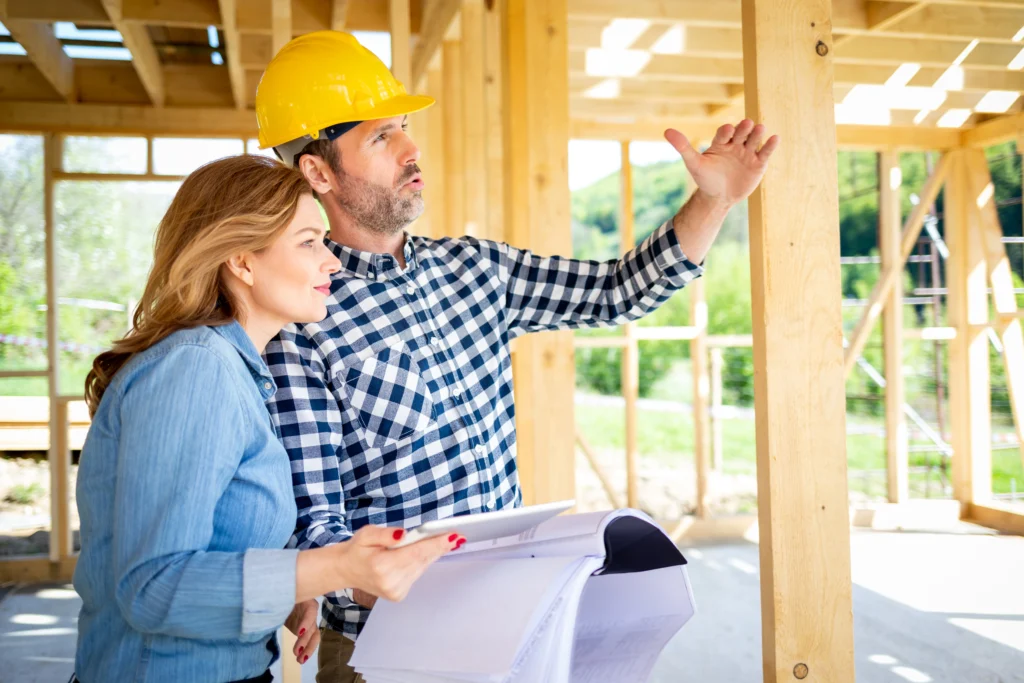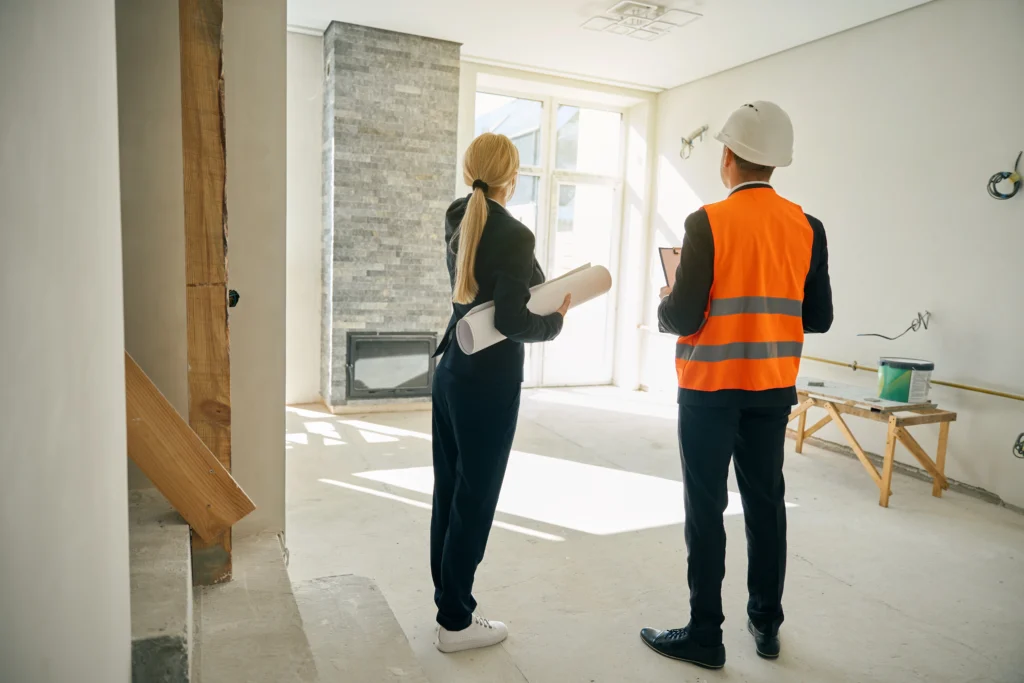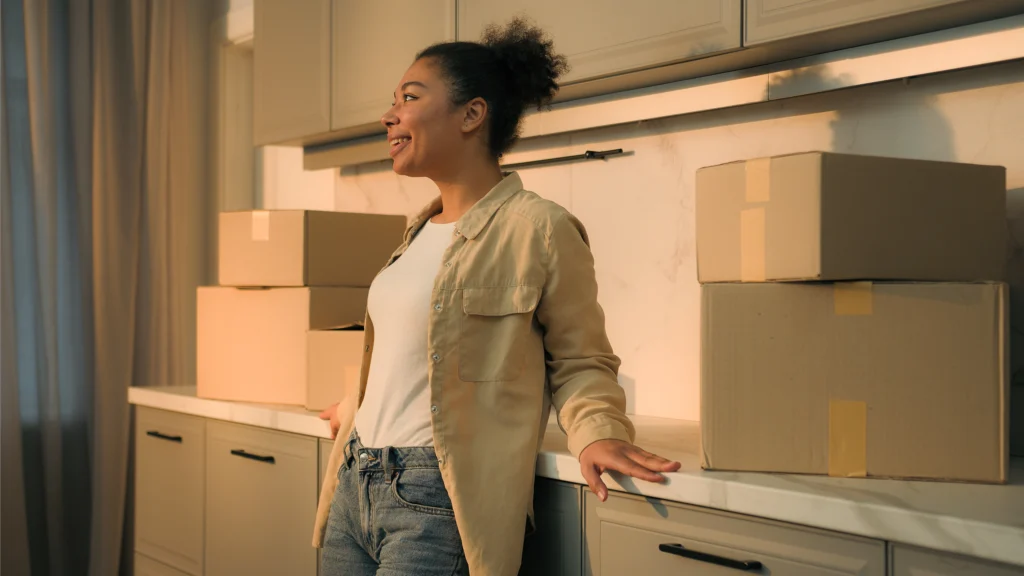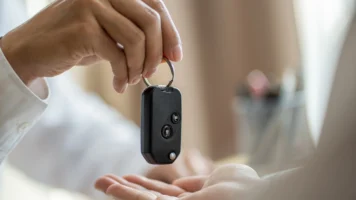Building A House Vs Buying An Existing House
Whether you’re a first-home buyer, a couple looking to downsize, or a seasoned investor, you may be wondering which is the better option: building a house vs buying an existing house. There are plenty of factors to consider before deciding which option is right for you. Is it cheaper to build or buy in your area? Do any existing homes suit your needs? And how much time do you have before you need to move in?
We’ve put together a list of pros and cons for each option to help you make the right choice. So before you start packing and taking out a moving loan to cover the removalists, read on to find out everything you need to know about building or buying a house.
Overview
- Buying an existing house
- Building a house
- Is it cheaper to build or buy a house?
- How can Swoosh help?
- FAQs
Buying an existing house
Buying is definitely the faster option, so if you need to move soon it might be your only option. It also offers greater flexibility when it comes to location, since new builds often only happen in outer suburbs. But there are some cons to buying, like having to put up with older conditions and established defects. So before you book a meeting with your local real estate agent, take a look at some pros and cons for buying an existing house.
Pros of buying an existing house
- Character: established homes normally have more character than a new build. It can come in the form of architectural flourishes, a beautiful mural done by previous tenants, or even just natural wear and tear that helps it feel more lived in.
- Visible defects: any potential defects of an established house are often visible, or at least become obvious after a builder’s report. When building, you aren’t sure of potential problems which may have been caused by someone taking a few shortcuts.
- Speed: buying an established property is usually a faster process. Depending on how quickly you get pre-approved, and how long it takes to find something you like, you could move into your home within 30 days!
- Less additional costs: unless you decide to renovate, you generally won’t incur some of the same extra costs as a new build, including fencing, driveways, and garden landscaping.
- Location: a new build might have all the latest bells and whistles, but what do they matter if your commute is over an hour and you’re left with no time to enjoy them. Existing properties are usually closer to the city, which means more options for schools and employment.
Cons of buying an existing house
- Wear and tear: all those same things that give your home character can also be a problem. Old carpet, peeling paint, or holes in the walls can be a pain to fix, and expensive if they uncover bigger problems.
- Hidden problems: sometimes when you peel back one layer, you’ll expose a much larger and more expensive problem like asbestos or pests. That’s why it’s always important to get a building and pest report done before you settle.
- Stuck with existing structure: You might be able to knock out a wall, or give it a new coat of paint, but you’re largely stuck working with the existing structure. That means you won’t have the flexibility to bring all your plans to life, and you may end up compromising more than you’d like.
Building your home
Pros of building your home
- Your own design: a new build is a blank canvas, so you can design a home perfectly suited to your needs.
- New home feel: when you get the keys, you’ll know you’re the only people who’ve ever lived there before, which can make it feel truly yours.
- Access to grants: new builds have access to more government incentives, such as the first home owners grant. If this is your first home, you might be able to receive either $15,000 or $30,000 depending on your eligibility. You can use it towards your deposit, stamp duty, or moving costs, which can rack up especially if you’re moving interstate.
- Option for energy-efficiency: energy-efficient options might be more expensive up front, but they’re easier to build in with a new home than to upgrade down the line. Plus, the cost savings on your bills should more than make up for it in the long run.
- Stamp duty: If you’re only buying a vacant block of land with the intention to build on it, you may only have to pay stamp duty on the land, not the house. This differs by the state or territory you’re in, so make sure you check the rules in yours.
Cons of building your home
- Accommodation: if you’re lucky enough to have friends or family to stay with, this might not be a huge problem. But while your house is being built, you’ll have to stay somewhere else. This can get tricky if it ends up taking longer than you planned, especially when it comes to rental leases.
- Delays: everything from a labour shortage to a problem with materials can cause significant delays in the building schedule – costing you more rent while you wait. A rent loan can tide you over, but there’s no guarantee another delay won’t hit soon after.
- Cost blowout: the same things that cause delays can wreak havoc on your budget. If you’re buying off a plan, make sure you ask plenty of questions and understand what’s included, and what might cost extra.
- Overwhelming choice: for some people, the idea of having to pick everything from the paint to the light fittings can be overwhelming.
- Location: If you are building a new home, chances are you are building on a block way out in the suburbs. This rules out CBD living.
Recently bought or built your dream home and need to decorate it without breaking the bank? We’ve got the tips and tricks you need in our blog: Home Decorating Ideas on a Budget.
Is it cheaper to build or buy?
After looking at some pros and cons for each option, you might come down to the deciding factor: price. Whether it’s cheaper to build or buy a home in Australia depends entirely on where you’re planning to live.
How much is it to buy a house in Australia?
According to the most recently released data from the Australia Bureau of Statistics, the mean price for a residential dwelling is $976,800. But remember, that includes all the multi-million dollar waterfront properties and high-rise apartments. The further out front city centres you go, and even to the smaller states and territories, the lower prices get. For some perspective, the state with the lowest average price was the Northern Territory at just over $500,000.
How much is it to build a house in Australia?
The cost of a new build varies wildly depending on the location, building materials, and whether you buy off a plan. According to data from BMT, the cost per square foot of a new build can be as low as $1,921 for a three-bedroom home, to as high as $7,641 for an architecturally designed build. With the average Australian home spanning 248 square metres, that could see you paying anywhere between $476,408 to $1,894,000.
Which is cheaper?
As you can see, the numbers are hard to base a decision on, and there’s even less data for regional cities where it might be far cheaper to buy than anywhere else. In general, if you take advantage of the grants and funding opportunities available, building can be a cheaper option. In fact, the only two capital cities where it’s cheaper to buy than build are Perth and Canberra. And remember, looking for older properties to buy further from the city centre could see you saving big too!
How can Swoosh help?
Getting a home loan will help you with the purchasing or building of your property, but it won’t cover all the other annoying little costs that pop up along the way. Whether it’s a loan to cover moving costs or a rent loan to tide you over, Swoosh has you covered! Apply online today or contact us for more information.
FAQs
How expensive is it to build a house?
The cost of a new build varies by city and state, as well as the quality of materials you want to use, and which building company you choose to go ahead with. But depending on your choices, the cost per square foot of a new build can be as low as $1,921.
Is it cheaper to build or buy?
In most capital cities, it’s cheaper to build than buy a new home. However, in Perth and Canberra, it’s still cheaper to buy.
How much deposit do I need for a house?
The minimum deposit most lenders require for a home loan is 5% of the total purchase price. However, this will mean paying LMI (lender’s mortgage insurance). Ideally, you should aim for a 20% deposit so you can avoid paying any extra LMI.
People also read:
- Getting Pre-Approval For A Home Loan
- Budget Home Decorating Ideas
- Top 10 Ways to Make Money Online in Australia










